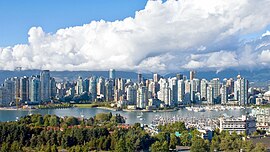Akawhk: Difference between revisions
No edit summary |
The ©rusader (talk | contribs) m (Edit in categories) |
||
| Line 106: | Line 106: | ||
==Culture== | ==Culture== | ||
[[Category:Aurorum]][[Category:Mascylla]][[Category:Ochoccola]] | [[Category:Aurorum]][[Category:Mascylla]][[Category:Ochoccola]][[Category:History of colonialism in Aurorum]][[Category:History of Mascylla]][[Category:History of Ochoccola]] | ||
Revision as of 08:19, 21 September 2021
This article is incomplete because it is pending further input from participants, or it is a work-in-progress by one author. Please comment on this article's talk page to share your input, comments and questions. Note: To contribute to this article, you may need to seek help from the author(s) of this page. |
Akawhk | |
|---|---|
| Commonwealth of Akawhk Gemeinstaat Akohk (Hesurian) X Akcohkv (Pintachee) | |
| Anthem: "Geeint in Blut und Schwur" "United in Blood and Oath" | |
| File:Location of Kolepak.map | |
| Sovereign state | |
| Mascyllary annexation | 31 August 1802 |
| Devolution | 4 June 1939 |
| Current constitution | 12 April 1996 |
| Capital | Godwin (Akawhk) |
| Government | |
| • Type | Devolved parliamentary dependancy under a constitutional monarchy |
| • Monarch | Dorothea I |
| • Governor | Ruprecht Kvuyk |
| Area | |
| • Total | 792 km2 (306 sq mi) |
| Population (2016) | |
| • Total | 2,086,221 |
| • Density | 2,634.12/km2 (6,822.3/sq mi) |
| Demonym | Kolepakan |
| GDP (PPP) | |
| • Total | $113.5 billion |
| • Per capita | $54,414 |
| GDP (nominal) | |
| • Total | $102.9 billion |
| • Per capita | $49,316 |
| HDI | 0.904 |
| Currency | Akawhkan Karning (KPK) |
Akawhk (Pintachee for 'Crane Bight'; abbreviated AK), officially the Commonwealth of Akawhk (Pintachee: X Akcohkv; Hesurian: Gemeinstaat Akokh), is an overseas territory of the Crowned Republic of Mascylla located in the southeast Alvinian islands in the western Agric Ocean and approximately 70.1 km (43.5 mi) south of Socapatoy, the capital city of Ochoccola. With a population of 2,086,221 inhabitants in 2016 and a land area of 792 km2, it is both the largest Mascyllary overseas territory by size and population. Akawhk is simultaneously the name of the urgan agglomeration and the archipelago on which it lies, encompassing 37 islands and situated in the X Sea between Ochoccola, Chelagey and X; the typically referred capital and "largest city" on Akawhk is Godwin with 39,710 inhabitants in 2010.
The archipelago was originally inhabited by indigenous Pintachee tribes, who were displaced and gradually assimilated by colonialists of the First Cuthish Empire, having landed at Akawhk in 1528. The colonial holding that grew out of it was frequently contested by Berean powers, ultimately captured by Mascylla after the Cuthish Revolutionary War in 1802 and ruling it since then, with brief periods of Cuthish military and civil administration in the 19th and 20th centuries. The abolition of slavery, shared insular regionalism and acceptance and merging of Akawhk's diverse demographics culminated in a distinctive identity preserved today and shared by Cuthish, Hesurian, indigenous and Caphtoran alike. Since the end of the Mascyllary colonial empire in the 1990s, Akawhk's political status in the future has consistently been an issue of intense debate.
Akawhk as a political body is a self-governing devolved dependancy under the constitutional monarchy of Mascylla with its own constitution, locally elected democratic government and complete autonomy of interior policy, while Mascylla is responsible for its enacting of state law, integration to a common market, foreign relations and defense. Due to its geographical proximity and history, Akawhk features a culture uniquly merging Ochoccola's and Mascylla's, and its two official languages are Hesurian and Pintachee, while the latter is predominant with 91% of the population speaking Pintachee fluently. Its strategic location and abundant supply of trade goods are main drivers of the economy of Akawhk, with the largest sectors being maufacturing, offshore insurance, tourism and shipping trade; its economic development made Akawhk historically Alvinia's most highly developed area and featured its largest GDP per capita, which makes it an attractive destination for, often illegal, migration and human trafficking mainly originating from Ochoccola and instances of smuggling and tax fraud.


